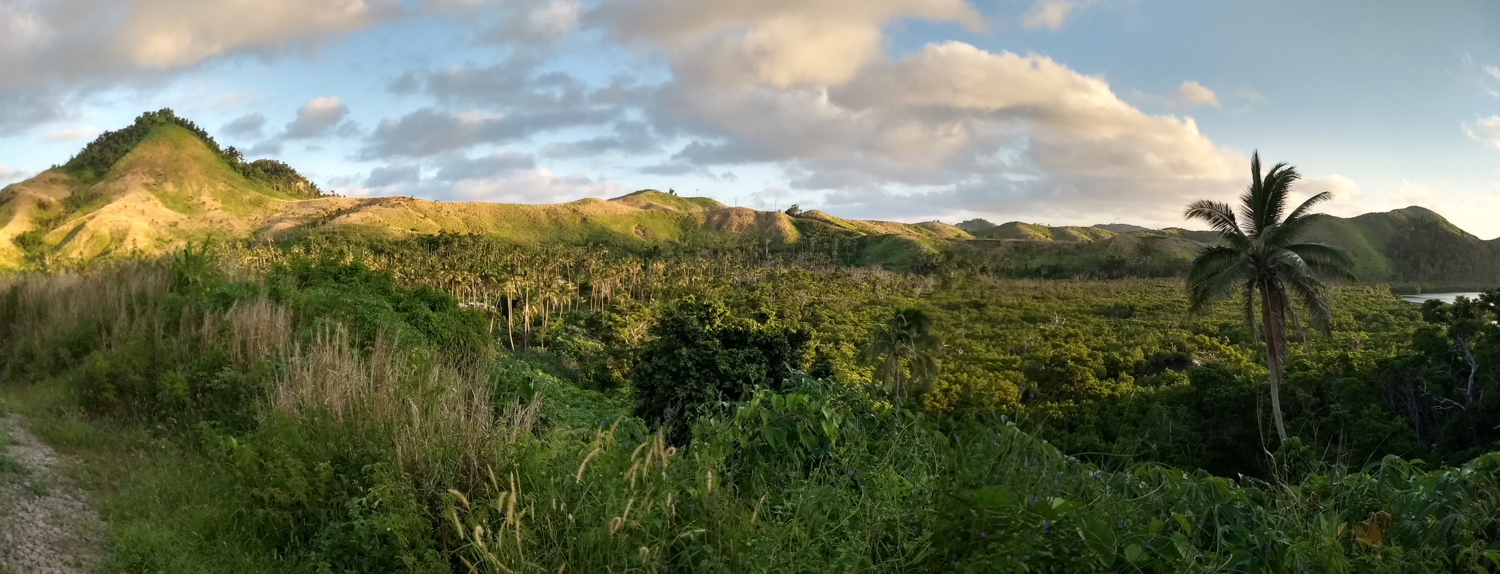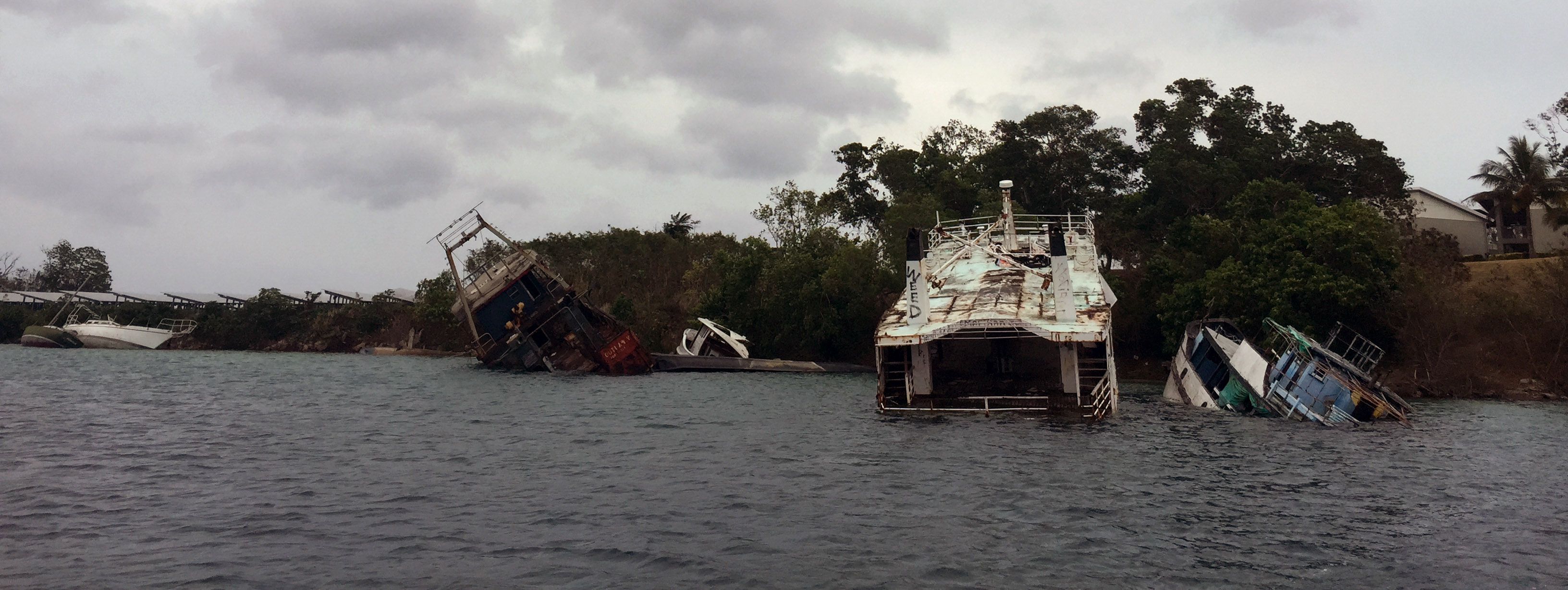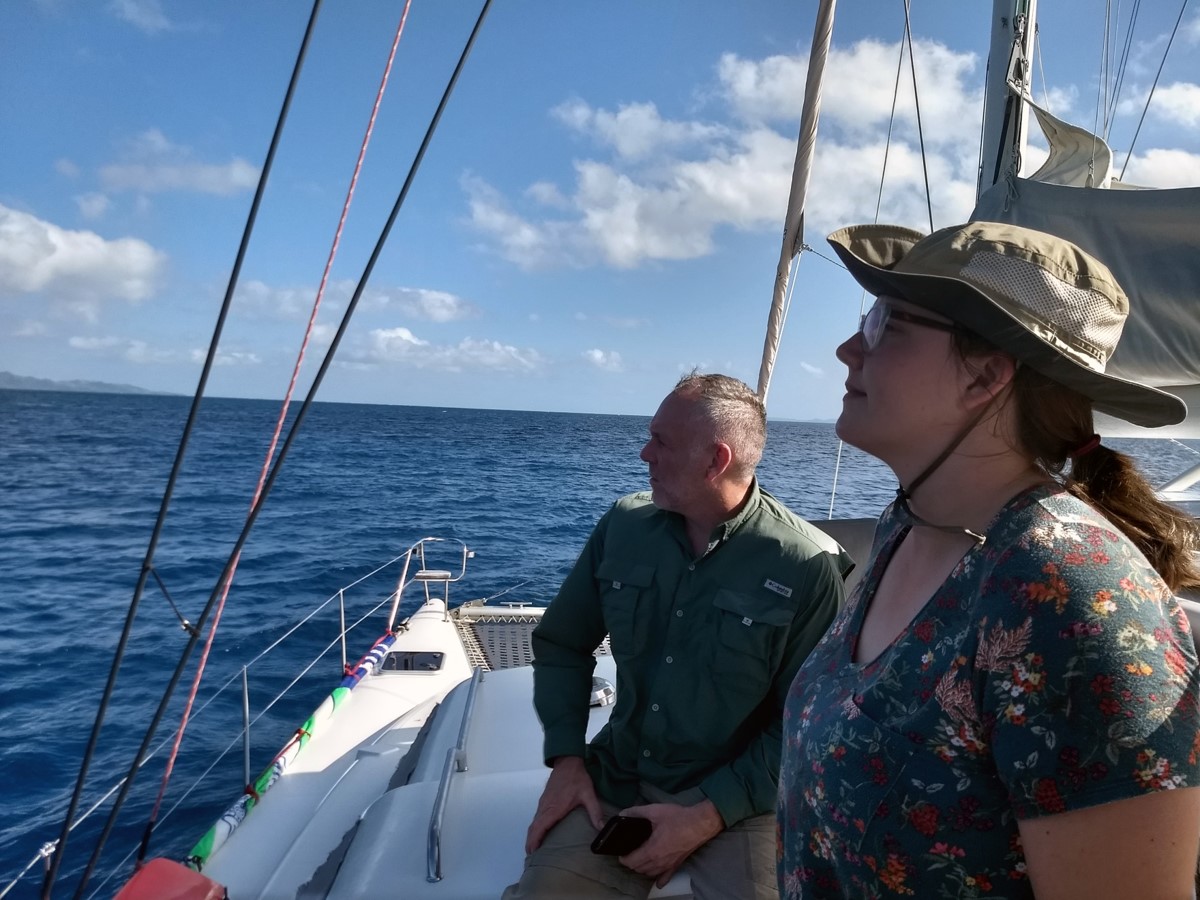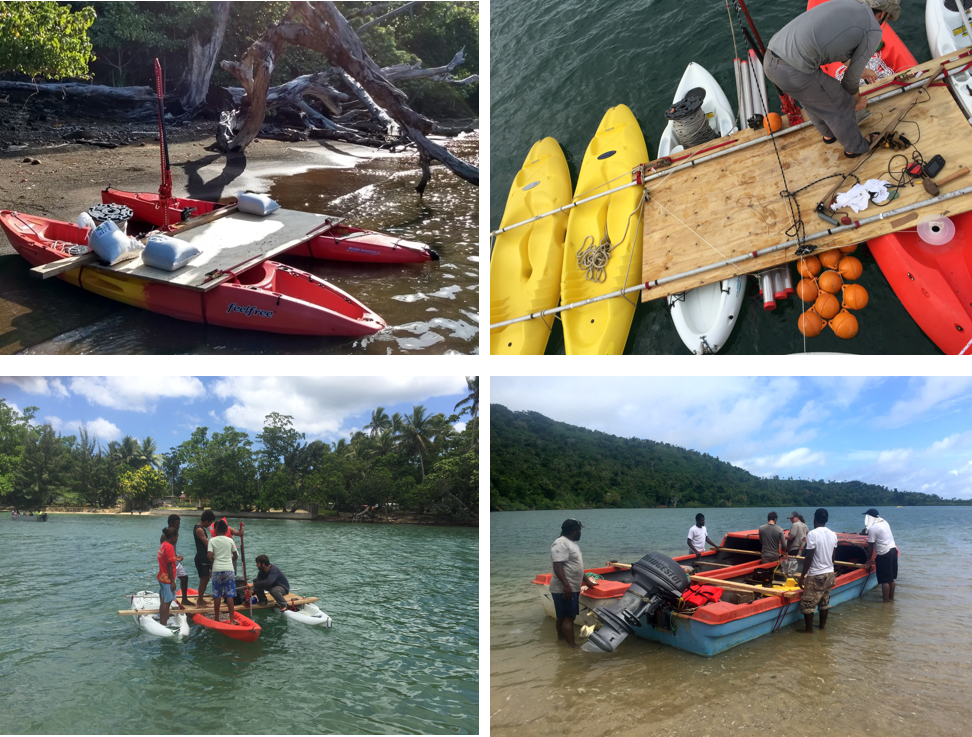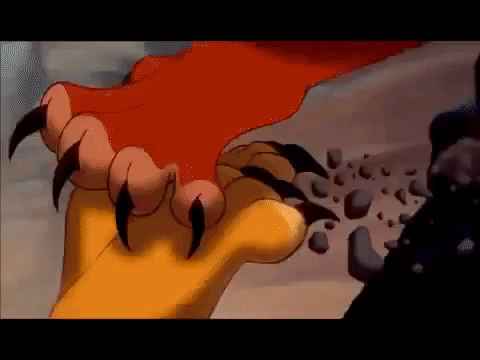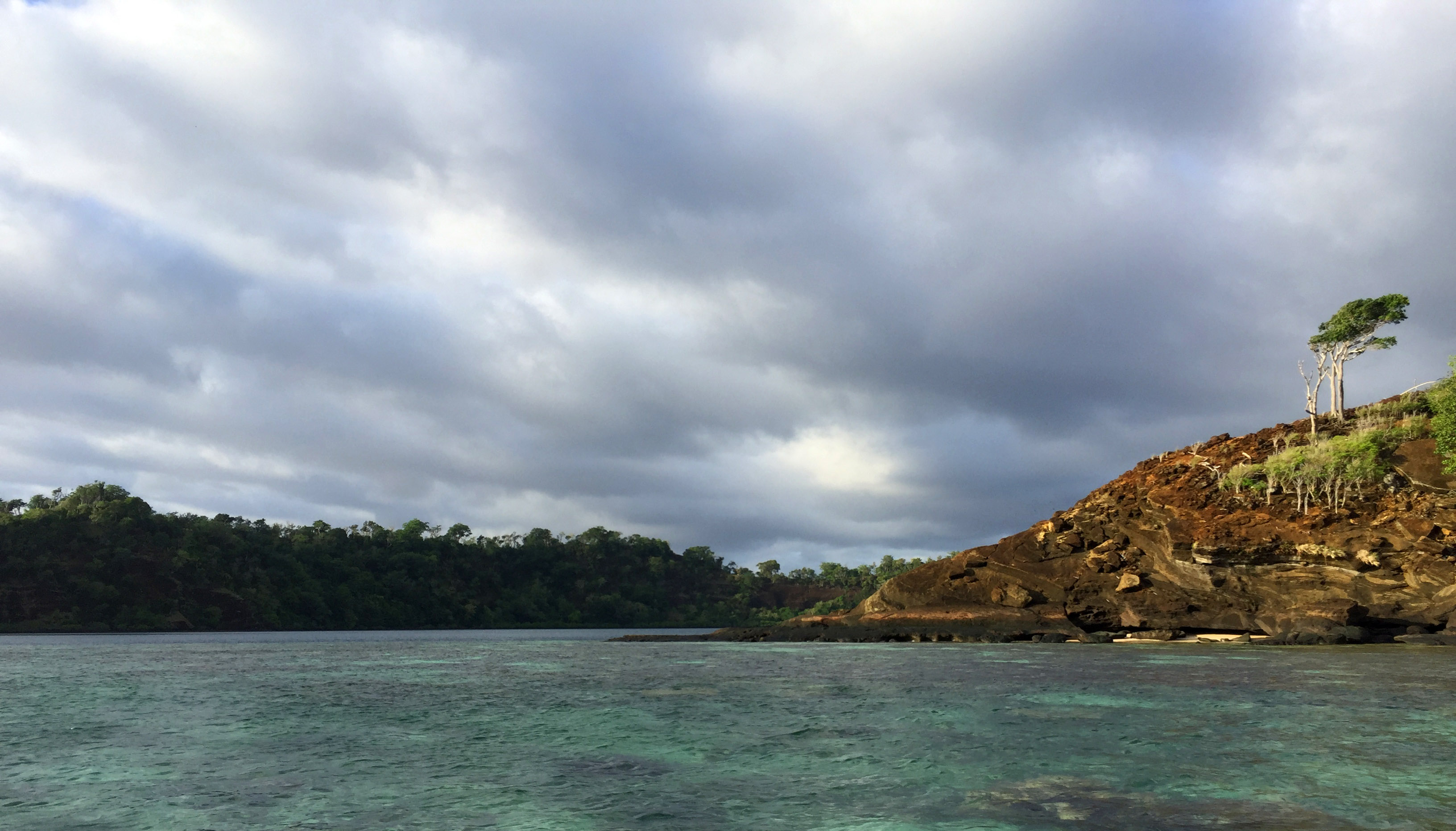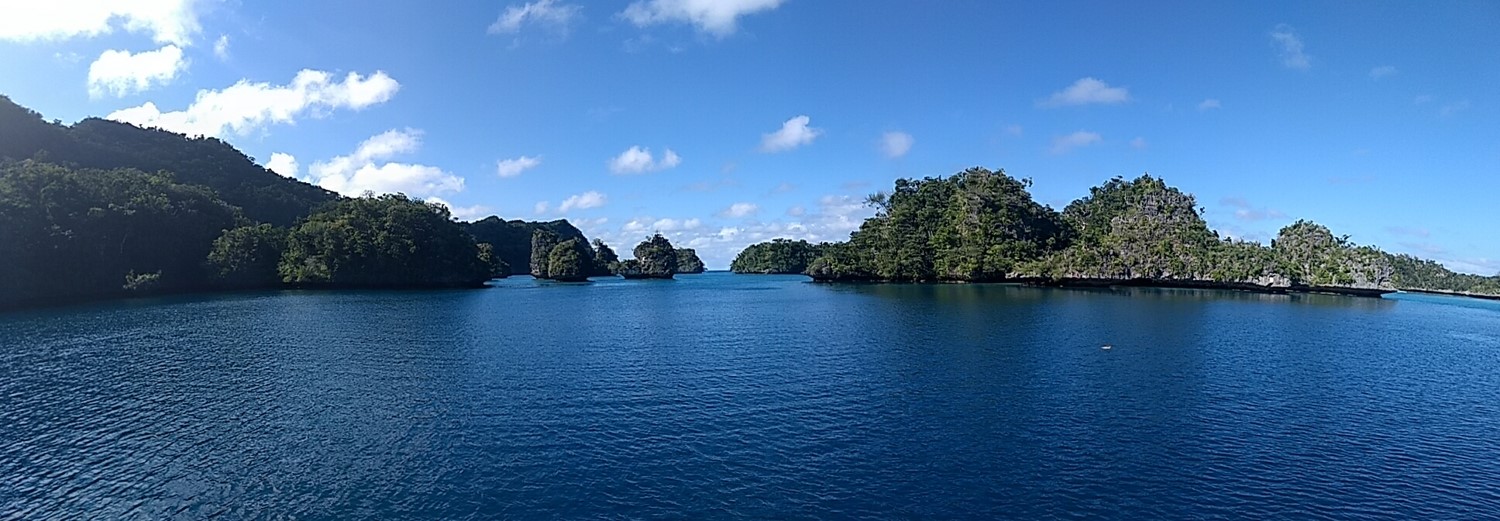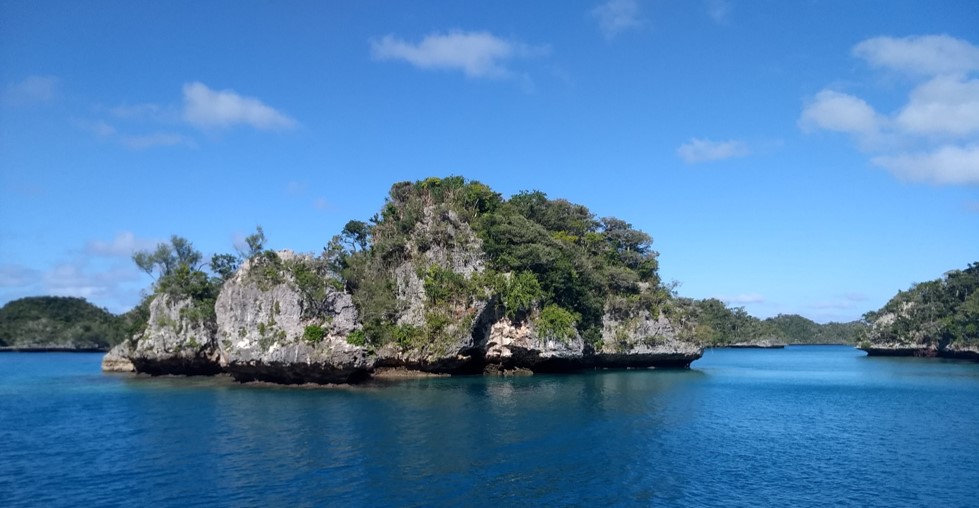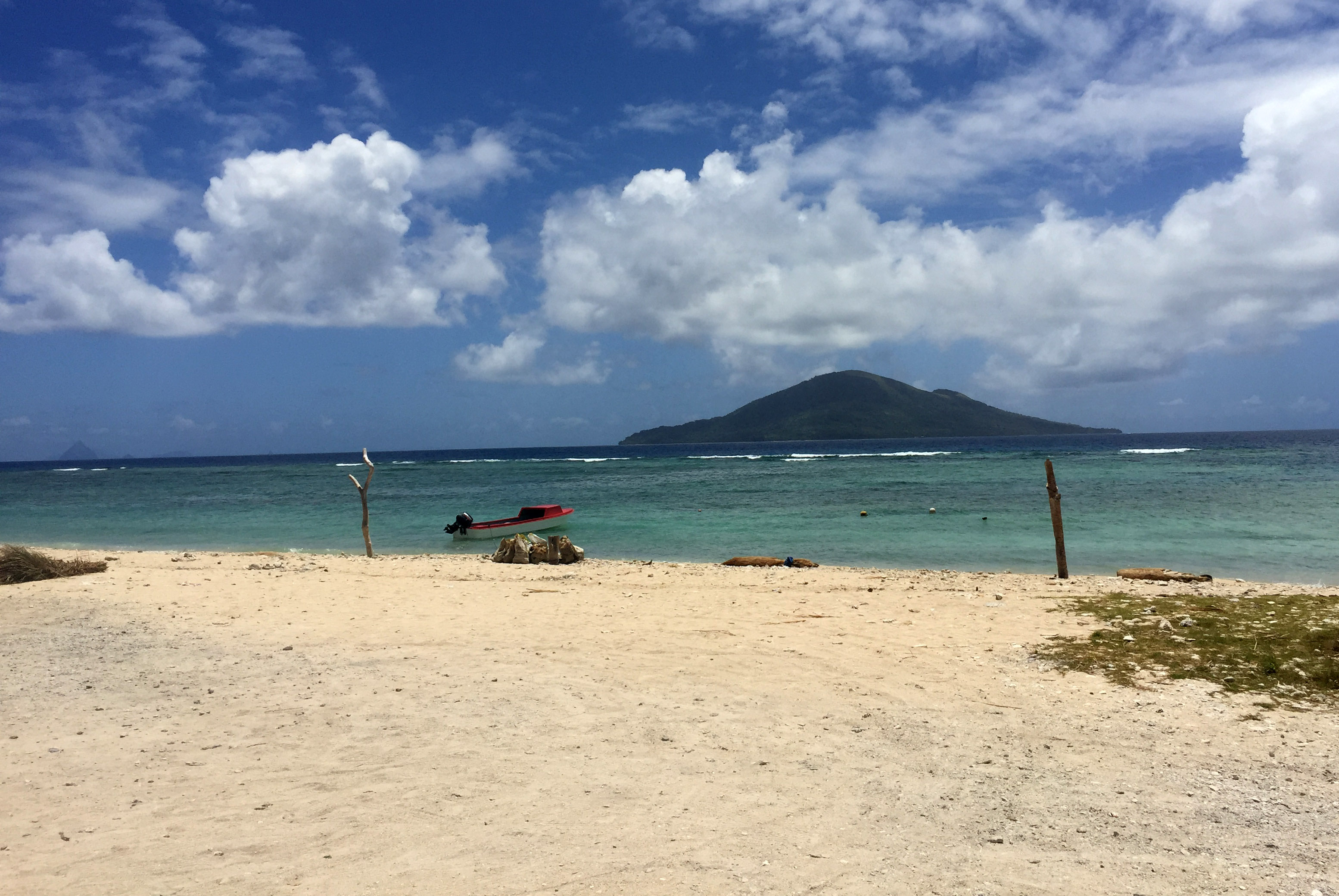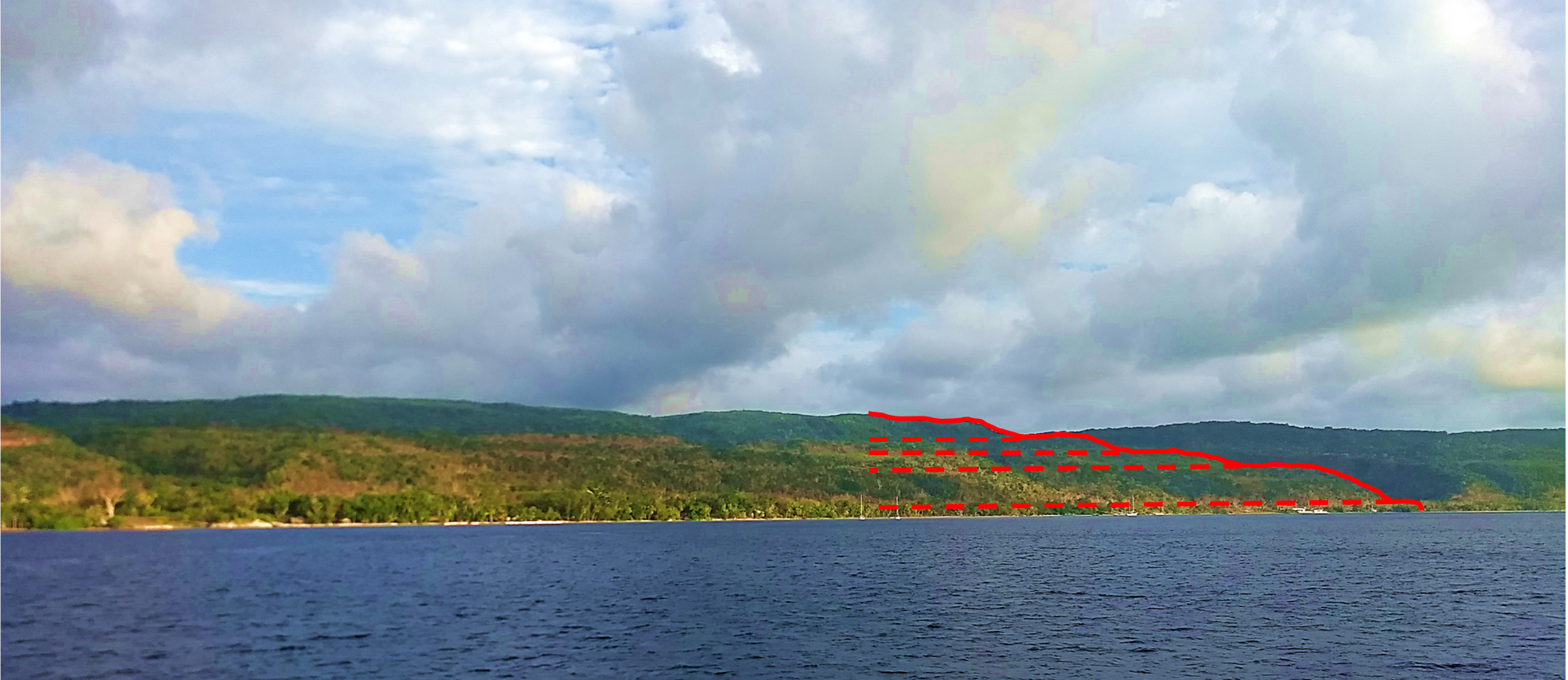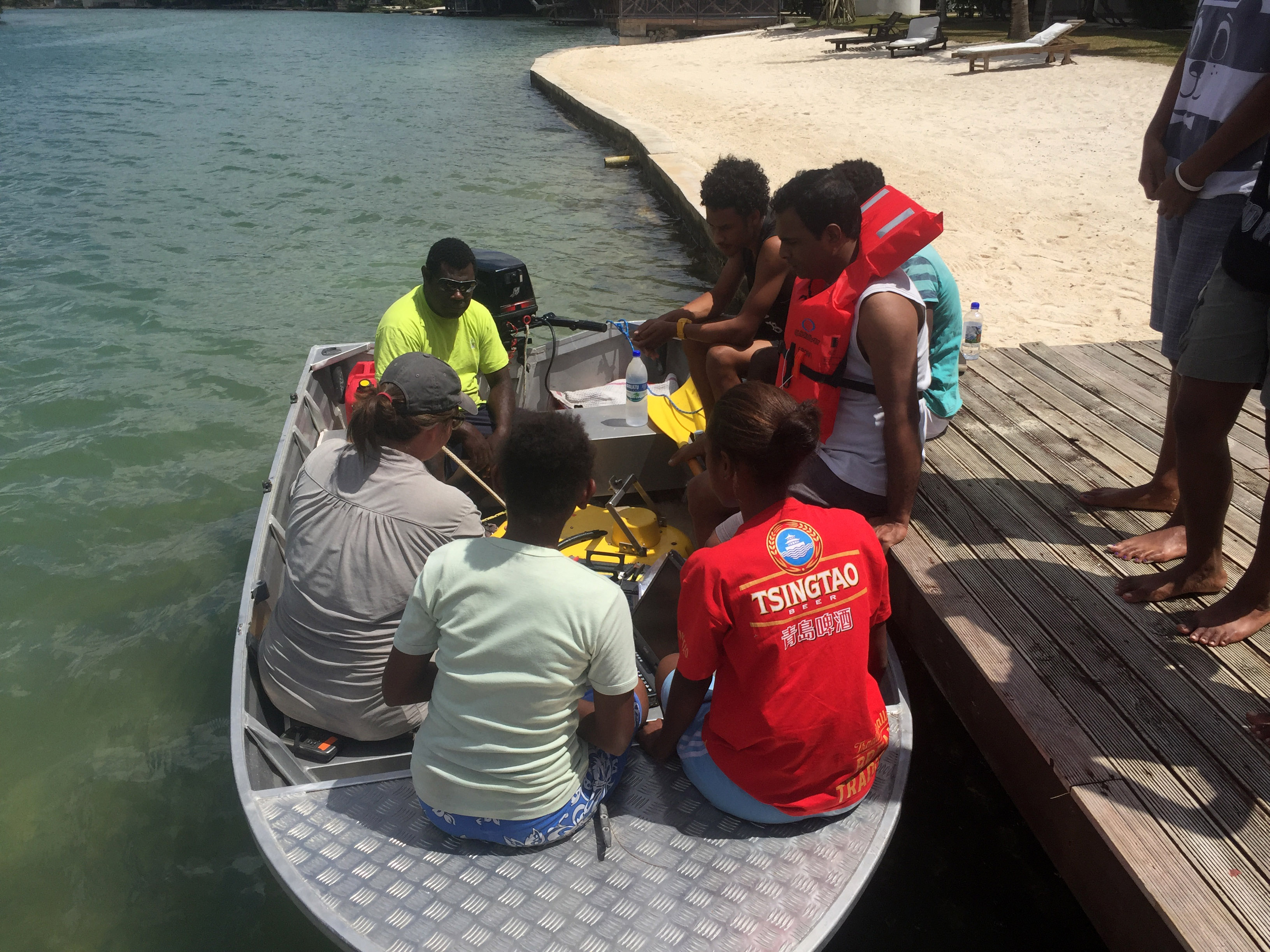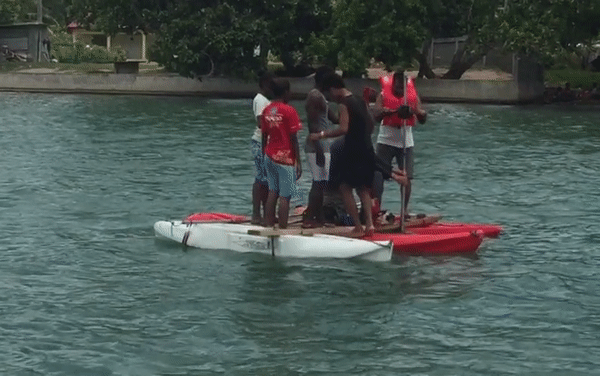Dead Storm Hunting: Fiji and Vanuatu
By: James Bramante, PhD student in the MIT/WHOI Joint Program
This blog is cross-posted on the Broader Impacts Group website.
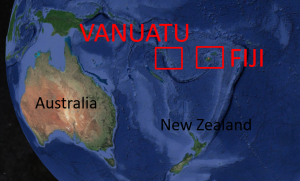
Fiji and Vanuatu are island nations in the tropical South Pacific.
There’s nothing like arctic weather to make you nostalgic for tropical fieldwork. During the past two weeks, temperatures dropped to 5 F (-15 C) in Boston and Cape Cod, and with wind chill it felt like -5 F (-20 C). I had the dubious fortune of bragging to my uncle in Alaska that for once our winter was harsher. Walking 20 minutes to work each way every day gave me plenty of time to wish I was back in Fiji and Vanuatu, extracting the remains of tropical cyclones long past.
Storm Chasing of a Different Kind
Dead cyclone hunting is one of the main activities of the Coastal Systems Group at WHOI. Tropical cyclones, (a.k.a. hurricanes, typhoons) are large, spinning storms that form over the ocean, increase in strength over warm water, and generate large wind speeds and waves that can devastate coastal communities.
In addition to knocking down trees and ripping off roofs, cyclones generate waves that sweep over coastal barriers like beaches, carrying layers of coarse sand into protected bays and lagoons. Without storm waves, only finer mud is deposited in these basins, making the sand layers stand out. Decades, hundreds, and thousands of years later, these sand layers, the only remains of long dead storms, remain preserved under thick mud. By retrieving long cores of sediment, we can identify ancient storms, their frequency, and even their magnitude. We’re the muddier and usually less glamorous cousins of storm chasers.
Fieldwork, Alpine Style
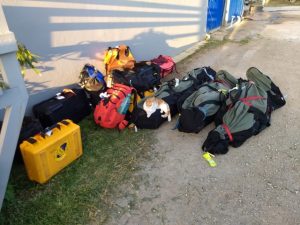
Traveling “light.” Normally our equipment fills half a shipping container. This trip we checked it all onto the plane as luggage. Photo: J. Bramante
In September 2017, we landed on Taveuni Island, Fiji prepared to tackle the field alpine style: fast and light. A lack of funding meant we couldn’t ship our large coring engines across the Pacific, so we made do with a hand-driven percussion coring system. To use this system, we attach a long, empty, aluminum barrel to the bottom of a circular anvil, and then lower it to the sediment surface on a strong rope.
We then use a second rope to raise and then drop a 50 lb “hammer” onto the anvil. The blows from the hammer push the barrel into the sediment incrementally, so that over an hour of back-breaking labor and hundreds of hammer strikes we can push the barrel up to 5 meters (~16 ft) into the sediment. Then the real work begins. A 5-m barrel of sediment only weighs about 46 kg (100 lb), but when it’s stuck 5-m deep in mud it can take hundreds of pounds of force to extract. Without our heavy duty electrical winch, we were forced to extract the barrels with a farm jack, also hand-driven. All of this work is conducted on a floating platform. Normally we use two 20-foot long inflatable kayaks to support the platform, but working alpine-style meant we had to make do with a platform half that size supported by sea kayaks.
At several sites our attempts to extract the sediment nearly sank our rafts and we had to let the sediment go. That feels a lot like this:
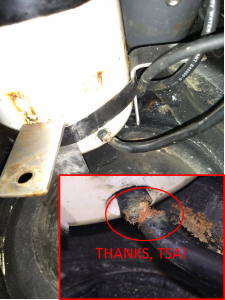
Our poor transducer after TSA attempted to remove it for the umpteenth time. We managed a field repair, but upon returning home we found TSA had severed the cord completely. Photo: J. Bramante
The risks of Alpine-style fieldwork are numerous: lighter equipment breaks more easily, without spares you can’t afford to lose equipment, and lighter equipment means less mud can be retrieved. On this trip our percussion corer broke catastrophically four times, we were forced to abandon three barrel-fuls of mud or risk drowning, tampering by TSA destroyed our most expensive piece of equipment, and by the end of the trip we were too exhausted to function.
However, as with alpine-style climbing, alpine-style fieldwork allows you to move more quickly and achieve more objectives. Over four weeks, 400 km, and two countries we meticulously surveyed ten sites with a sub-bottom sounder (sonar that tells you how much mud is at the bottom) and successfully retrieved mud from all eight sites at which we made the attempt.
The Views
Below is a sampling of the sights at our sites to keep you warm during this frigid winter.
Cobia, Fiji
Bay of Islands, Vanua Balavu, Fiji
Emau, Vanuatu
Port Havannah, Efate, Vanuatu
Postscript
Fiji and Vanuatu were beautiful countries, whose residents were incredibly friendly and helpful at every step of our journey. All surveys and sediment extraction were conducted with permission from both federal authorities and local villages at each site. We are especially indebted to Dr. Krishna Kumar Kotra and his students at the University of the South Pacific, Emalus Campus, who helped us reach and extract sediment from our Vanuatu sites while respecting local customs and concerns.

